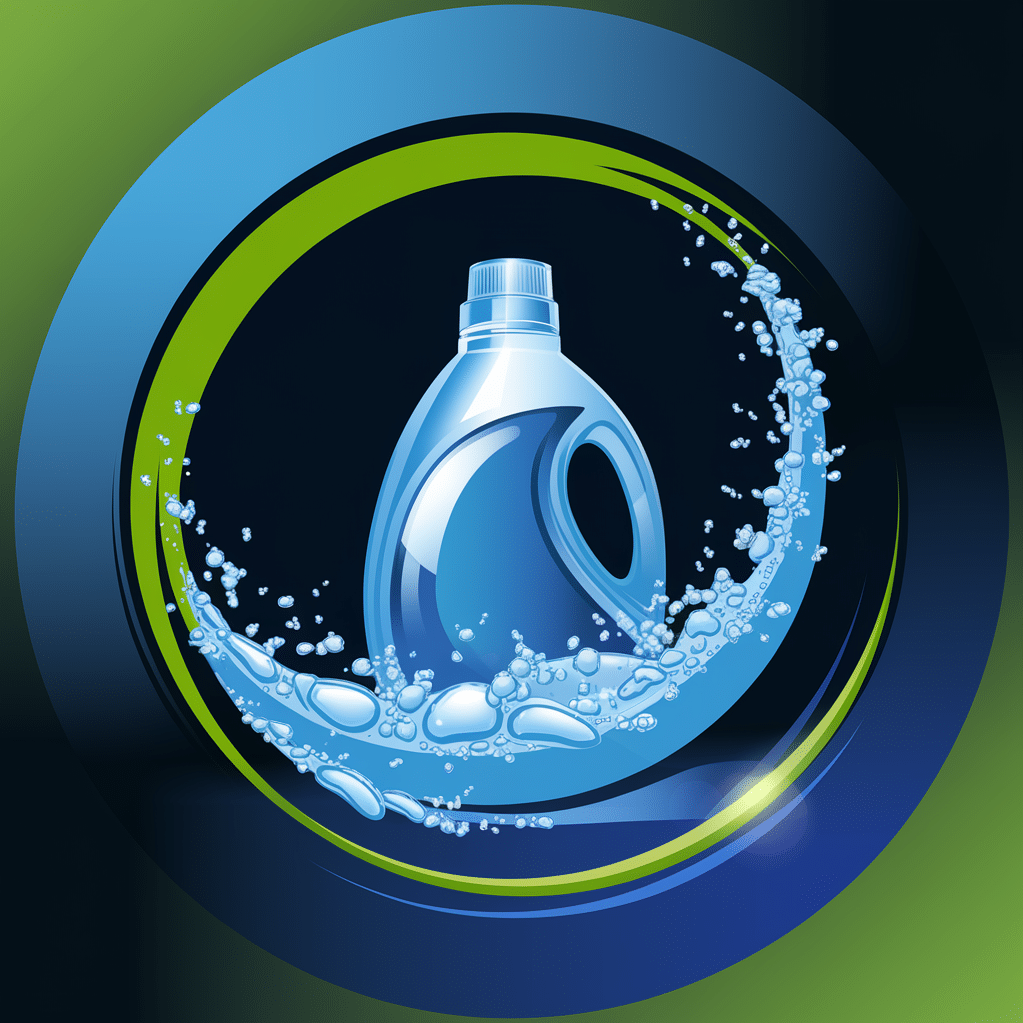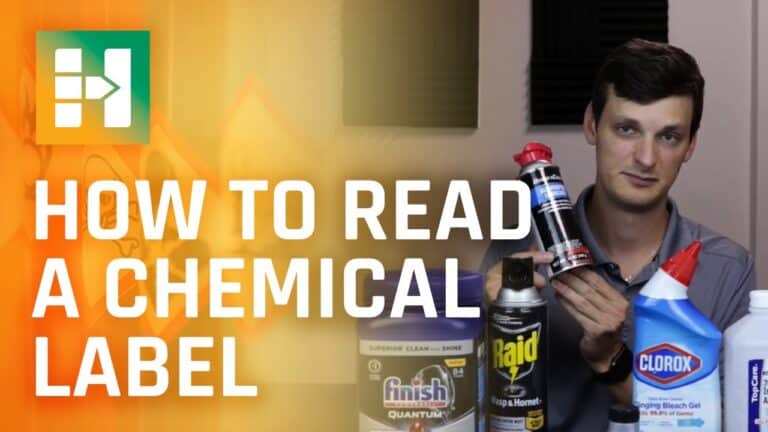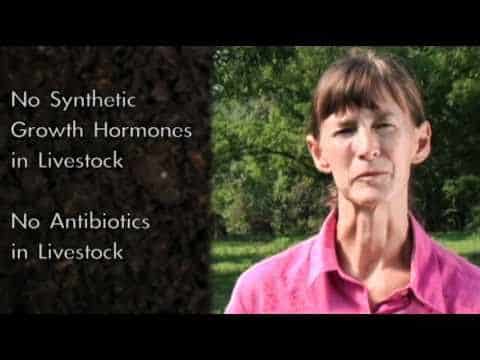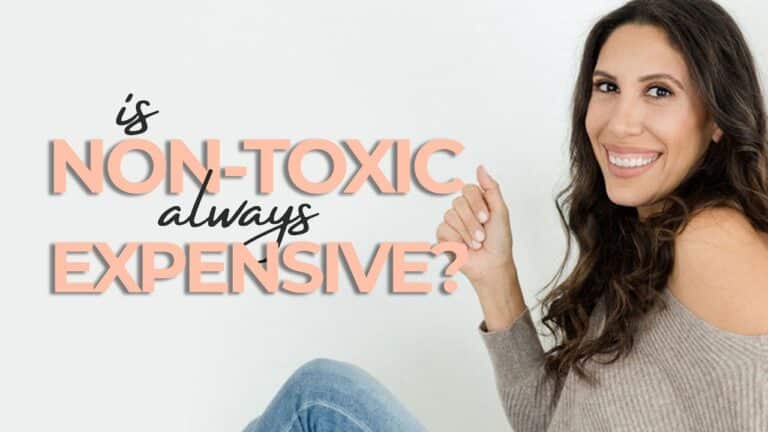Understanding Ingredients: What to Avoid in Conventional Laundry Detergents

Many conventional laundry detergents contain harmful chemicals that can affect your health and the environment. These ingredients hide behind complex names on labels, making it hard to know what’s really in your detergent.

The most dangerous ingredients to avoid in laundry detergents include 1,4-dioxane, formaldehyde releasers, and synthetic fragrances. These have been linked to skin irritation, allergies, and other health concerns.
Your clothes touch your skin all day long, so what you wash them in matters. Common detergent chemicals like phosphates, parabens, and optical brighteners can seep into your skin and build up in waterways.
Learning to spot these ingredients helps you make safer choices for your family and the planet.
Common Harmful Ingredients in Conventional Laundry Detergents

Many laundry detergents contain toxic chemicals that can harm your health and the environment. These ingredients may cause skin irritation, allergic reactions, hormone disruption, and other health issues.
Synthetic Fragrances
Those pleasant scents in your detergent often hide dangerous chemicals. Artificial fragrances can trigger allergies and respiratory problems.
Manufacturers don’t have to disclose fragrance ingredients on labels. A single “fragrance” can contain hundreds of undisclosed chemicals.
Common symptoms from synthetic fragrances include:
- Headaches
- Dizziness
- Skin rashes
- Breathing difficulties
- Asthma attacks
Phosphates
Phosphates are cleaning agents that soften water and remove stains. When released into waterways, they cause serious environmental damage.
These chemicals promote algae growth in lakes and rivers, depleting oxygen levels and harming aquatic life.
Many countries have banned or restricted phosphates in detergents due to their negative environmental impact.
Optical Brighteners
These synthetic chemicals make clothes appear whiter by tricking your eyes. They work by coating fabrics with chemicals that convert UV light into visible blue light.
Optical brighteners don’t actually clean your clothes. They can:
- Cause skin sensitivity
- Remain in fabrics after washing
- Build up in waterways
- Harm aquatic organisms
Sulfates
Sulfates create the foaming action in detergents. The most common types are sodium lauryl sulfate (SLS) and sodium laureth sulfate (SLES).
These harsh chemicals can:
- Strip natural oils from skin
- Cause irritation and dryness
- Trigger contact dermatitis
- Disrupt your skin’s natural barrier
Parabens
Parabens are preservatives that prevent bacterial growth in detergents. These chemicals can penetrate your skin and enter your bloodstream.
Research links parabens to:
- Hormone disruption
- Reproductive issues
- Breast cancer risk
- Early puberty onset
Formaldehyde
Some detergents contain formaldehyde or formaldehyde-releasing preservatives. This known carcinogen can off-gas from your cleaned clothes.
Short-term exposure may cause:
- Eye irritation
- Throat burning
- Skin reactions
- Breathing difficulties
Chlorine Bleach
Chlorine bleach (sodium hypochlorite) is a harsh chemical that can cause serious health problems. When mixed with other cleaning products, it creates toxic fumes.
Risks include:
- Respiratory issues
- Chemical burns
- Eye damage
- Skin irritation
Nonylphenol Ethoxylates (NPEs)
NPEs are surfactants that help remove dirt and stains. These chemicals are banned in many countries due to their harmful effects.
NPEs break down into toxic substances that:
- Persist in the environment
- Disrupt hormones
- Harm aquatic life
- Build up in the food chain
Health Impacts of Harmful Ingredients

Many conventional laundry detergents contain chemicals that can cause serious health problems through skin contact, inhalation, and long-term exposure. These ingredients range from mild irritants to potential carcinogens.
Skin Irritation and Allergies
Common detergent chemicals like synthetic fragrances and optical brighteners can trigger severe skin reactions. Your skin may develop redness, itching, or rashes after contact with contaminated clothing.
Watch out for these common irritants:
- Sodium lauryl sulfate (SLS)
- Artificial dyes
- Methylisothiazolinone
- Formaldehyde
People with sensitive skin or existing conditions like eczema face greater risks. Even trace amounts of these chemicals left in clothes can cause ongoing irritation.
Respiratory Issues
Toxic ingredients in laundry products can trigger breathing problems when inhaled during use or from wearing treated clothes. The fine powder or mist from detergents enters your airways easily.
Symptoms you might experience:
- Coughing
- Wheezing
- Shortness of breath
- Asthma attacks
Artificial fragrances and volatile organic compounds (VOCs) are major respiratory triggers. These chemicals can linger in your laundry room and on clothes.
Hormonal Disruptions
Many detergent ingredients act as endocrine disruptors, interfering with your body’s natural hormone function. These chemicals can absorb through your skin from wearing washed clothes.
Common hormone-disrupting ingredients:
- Phthalates
- Nonylphenol ethoxylates (NPEs)
- BPA
- Phosphates
Extended exposure may affect reproductive health, metabolism, and development in children.
Carcinogenic Risks
Several detergent components have links to cancer development. While occasional exposure likely poses minimal risk, regular contact over years raises concerns.
Key carcinogenic ingredients to avoid:
- 1,4-dioxane
- Formaldehyde
- Ethylene oxide
These chemicals can enter your body through skin absorption or inhalation during laundry tasks. Your risk increases with frequent exposure and use of multiple products containing these substances.
Environmental Impacts of Harmful Ingredients
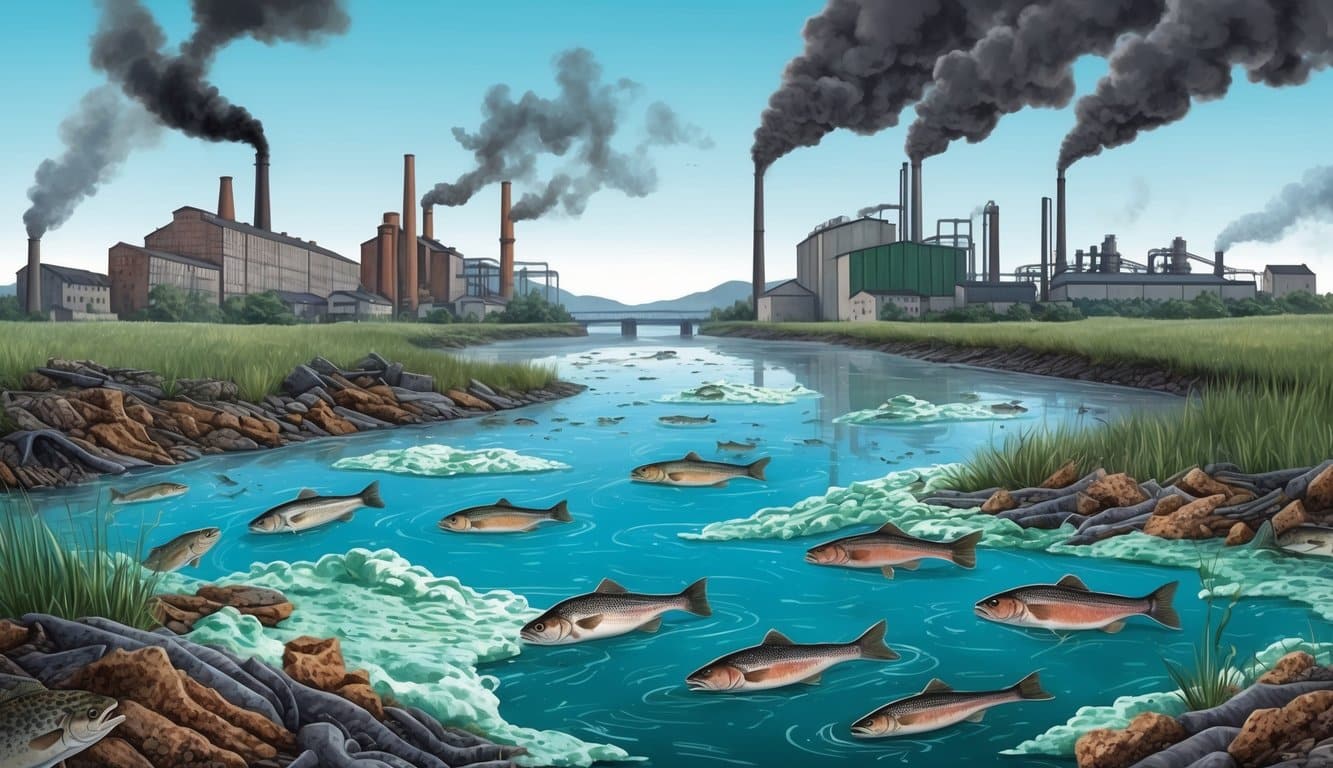
Many chemicals in conventional laundry detergents end up in waterways and ecosystems after each wash cycle. These substances can persist in the environment for years, causing serious damage to wildlife and natural habitats.
Water Pollution
Common detergent chemicals like phosphates contribute to excess algae growth in lakes and rivers. When these algae die, they deplete oxygen levels in the water.
Synthetic surfactants create a film on water surfaces that blocks oxygen transfer between air and water. This makes it harder for aquatic plants to photosynthesize.
Toxic ingredients in laundry products can travel through water treatment facilities unchanged and end up in drinking water supplies.
Harm to Aquatic Life
Fish and amphibians absorb detergent chemicals directly through their gills and skin. Even small amounts can damage their protective mucus layers.
The chemicals interfere with fish reproduction by disrupting hormone systems. This leads to fewer offspring and abnormal development.
Synthetic fragrances are especially toxic to aquatic organisms. They can cause organ damage and death in fish, even at very low concentrations.
Bioaccumulation in Wildlife
When small organisms consume contaminated water or food, chemicals build up in their bodies over time. This process is called bioaccumulation.
As larger animals eat contaminated prey, the toxins become more concentrated at each step up the food chain. Top predators like birds of prey end up with the highest levels.
These accumulated chemicals can cause cancer, reproductive problems, and organ failure in wildlife populations.
Soil Degradation
Chemical surfactants bind to soil particles, reducing their ability to retain water and nutrients plants need.
Detergent residues kill beneficial soil bacteria and fungi that help break down organic matter. This disrupts natural nutrient cycling.
The high salt content in many detergents changes soil chemistry, making it harder for plants to grow. Areas near water treatment discharge points often show reduced vegetation.
How to Identify Concerning Ingredients on Labels
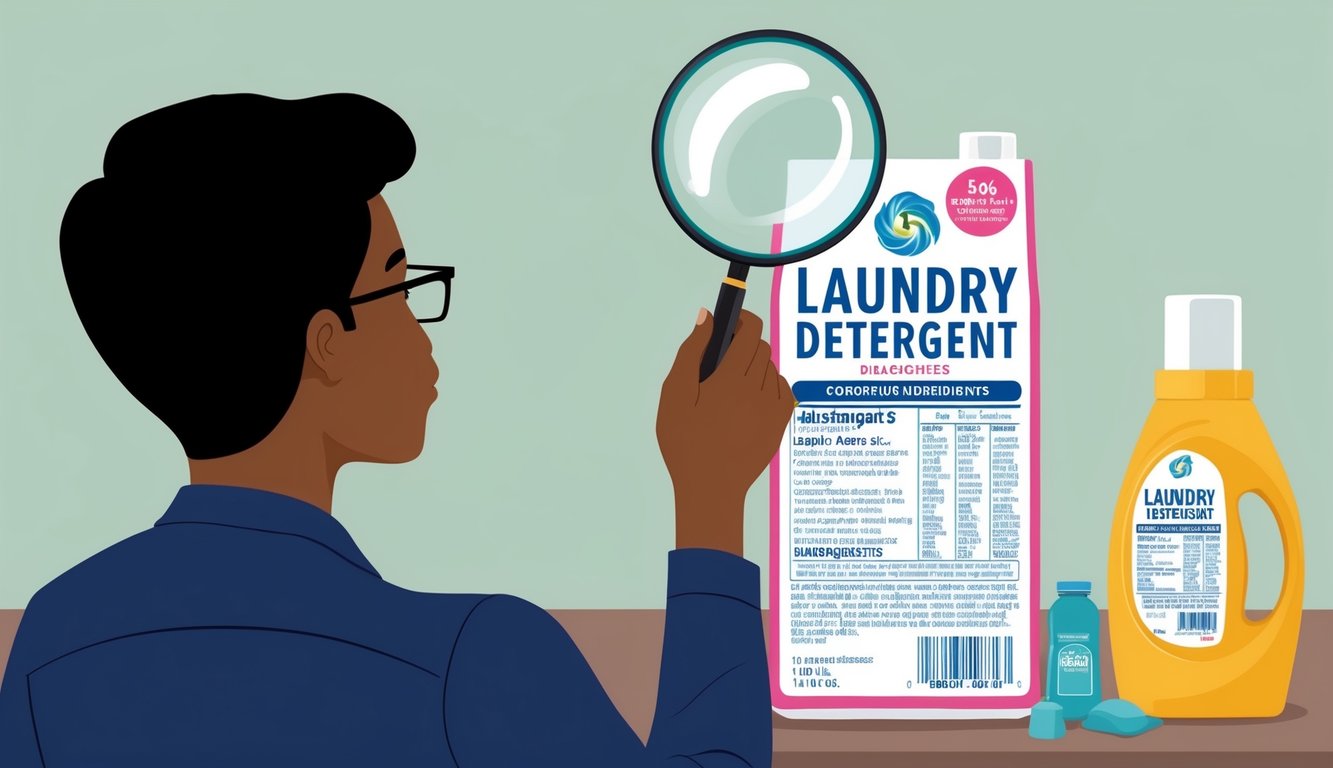
Splitting text up into at most two sentences per paragraph, removing mid-article conclusion paragraphs and sentences, and converting passive voice sentences into active voice can increase the readability score by simplifying complex sentences.
Reading laundry detergent labels requires attention to detail and knowledge of key ingredients. Learning what to look for helps you make informed choices about the products that come into contact with your clothes and skin.
Common Labeling Terms to Watch For
Watch out for fragrance or parfum on labels – these terms can hide dozens of undisclosed chemicals. Terms like brighteners, enzymes, and surfactants often indicate synthetic ingredients.
Look for these red-flag terms:
- Optical brighteners (synthetic chemicals that make clothes appear whiter)
- 1,4-dioxane (often hidden in ingredients ending in “-eth”)
- Phosphates (environmental pollutants)
- NPE (nonylphenol ethoxylates)
Many brands use green-washing terms like “natural” or “eco-friendly” without regulation. These marketing claims need careful scrutiny.
Understanding Ingredient Lists
Ingredients appear in order of highest to lowest concentration. The first few items make up most of the product.
Key placement indicators:
- Front of label: marketing terms
- Back of label: complete ingredient list
- Bottom of list: preservatives and fragrances
Pay special attention to warning symbols and hazard statements. These provide direct clues about potentially harmful contents.
Tips for Researching Unknown Ingredients
Create a list of unfamiliar ingredients while shopping. Use your phone to check the Environmental Working Group’s database for safety ratings.
Keep these research strategies handy:
- Look up chemical names using reputable databases
- Check ingredient safety ratings
- Compare similar products’ ingredients
- Read consumer reviews about reactions
Take photos of products that work well for you. This helps track safe alternatives and remember which ingredients to avoid.
Practical Tips for Choosing Safer Alternatives
Making smart choices about laundry detergent means reading labels carefully and picking products that match your health and environmental values. A clean wardrobe doesn’t require harsh chemicals.
Key Certifications and Labels to Look For
Look for products with USDA Organic and EPA Safer Choice labels. These trusted certifications guarantee stricter safety standards.
EWG Verified products undergo extensive testing for health and environmental impact. This certification means no concerning ingredients made it into the formula.
Leaping Bunny and PETA Certified logos indicate cruelty-free manufacturing. These products weren’t tested on animals.
Recommended Natural and Eco-Friendly Brands
Plant-based enzyme detergents clean effectively without synthetic chemicals. Popular options include Seventh Generation, Mrs. Meyer’s, and Method.
Top Gentle Brands:
- Branch Basics
- Molly’s Suds
- Meliora
- Dropps
These brands avoid artificial fragrances and dyes. They use coconut-based surfactants and natural enzymes instead.
DIY Laundry Detergent Recipes
Mix 2 cups washing soda and 2 cups baking soda. Then, add 1 cup grated castile soap for a basic powder detergent.
Simple Liquid Recipe:
- 1 cup Borax
- 1 cup washing soda
- 1 grated bar of natural soap
- 2 gallons hot water
Store homemade detergents in airtight containers. Use 1-2 tablespoons per load. You can also add 20 drops of essential oil if you want natural fragrance.
Test DIY mixtures on small fabric areas first. Some fabrics may need special handling.
